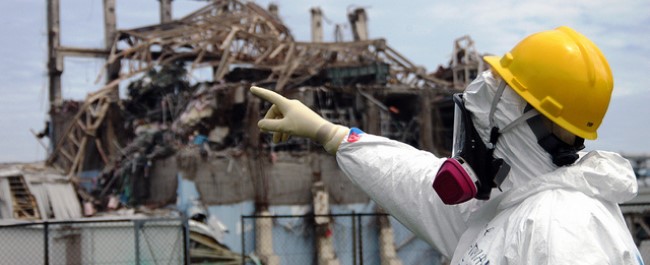Consolidating global knowledge on hazardous Fukushima Daiichi Nuclear Power Plant particulate

What can be done to better understand nuclear fall-out and associated risk? And how can this information be used to repopulate affected areas?
The challenge
The accident at Japan’s Fukushima Daiichi Nuclear Power Plant (FDNPP) in March 2011 represents one of the worst radioactive release events to have ever occurred. In the aftermath of the event approximately 160,000 people were evacuated from their homes – many of whom are still to return due to the high levels of radiation that surround the plant. While eight years have now passed since the multi-reactor incident, there still exists a considerable gap in the connected knowledge of not only where the radioactive particulate released during the accident exists, but also the state/form in which such material exists and the associated environmental implications that may result.
Since the accident and release of material from three of the site’s nuclear reactors, there have been numerous studies on the microscopic material recovered from aerosol samplers, plant surfaces, bulk sediments and even articles of clothing. Such studies on the particulate extracted from these samples have provided stochastic insight into the nature of the accident and more-importantly its environmental legacy, that only now (from mid-2019) experts are beginning to attribute to specific reactor events.
The fragmented knowledge on this harmful, radioactive and chemotoxic contamination (most of which is easily inhalable being of micron-scale) needs collating.
What we're doing
We will produce a cross-institutional platform (supported by the IAEA) which will combine information about the particulates location with experimentally-derived information (e.g. structure, form, and composition).
How it helps
This collaborative platform will accelerate the multinational understanding of the environmental hazards associated with invisible nuclear particulates. Through the combined understanding of; (i) the distribution of the particulate, (ii) its composition, and (iii) how it is evolving within the environment, it will be possible to define an accurate risk map associated with the differing types of ejecta material distributed widely across the 8,500 km2 within Fukushima Prefecture. This is especially important if the planned re-population activities are to continue.
 Lead researcher profile
Lead researcher profile
Dr Peter Martin, Research Associate looking at nuclear materials, radiation detection/characterisation and sensor-based systems
Related research centres
Partner organisations
- Japan Atomic Energy Agency (JAEA)
- International Atomic Energy Agency (IAEA)